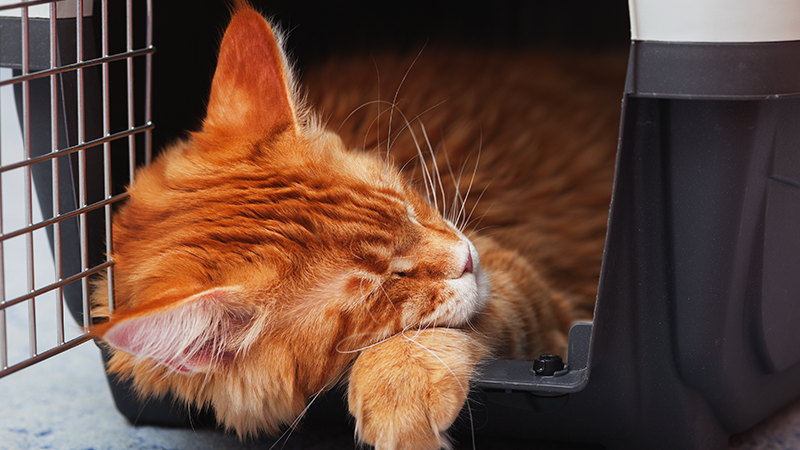
If you’re a cat owner, you’ve likely experienced how difficult it can be to comfortably get your cat in a carrier. It’s a struggle for many cat owners, but with the right techniques, it doesn’t have to be.
On a day to day basis it may not be necessary for your cat to be in a carrier, but when it comes to vet visits, you’ll need to get your cat to the vet safely and securely. Follow these steps to help get your cat comfortable in the carrier.
5 steps to get your cat comfortable in a pet carrier (so you don’t have to miss those important vet visits!):
- Change your cat’s association with the carrier. Take the door off your carrier, place it inside your cat’s favourite room, or lightly spray with feline pheromone spray to encourage exploration.
- Encourage your cat to go near the carrier. Place your cat’s favourite treats near their carrier until they take interest. Slowly work your way up to placing their treats right in front of the carrier, and eventually inside.
- Practice closing the carrier door. Once your cat is comfortable going inside the carrier, close the door for a few seconds, open it and offer a treat. Add this to your training routine.
- Get your cat comfortable with the car. With your cat already in the carrier, sit with them for a few minutes in the car without turning the engine on. Repeat until they’re comfortable being in the car.
- Turn the engine on but don’t go anywhere. Once your cat is okay with the engine being on, try going for a short ride around the block.
DON’T:
- Force your cat into a carrier headfirst. If they need gentle coaxing, try turning them around and letting them back into the kennel. In an emergency, wrap your cat, including their head, in a towel or blanket and gently life them into the carrier.
- Swing the carrier or bump into doors. Always support the bottom of the carrier with one hand.
- Travel with your cat loose in the car. Traffic accidents occur when panicked cats crawl under your feet or jump into your lap while you are driving.
- Place the carrier on the floor of the clinic waiting room. Cats prefer to be at or above eye level of any dog that may rush into the veterinary office.
